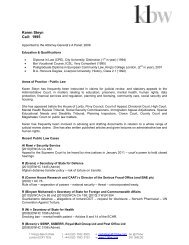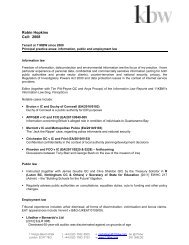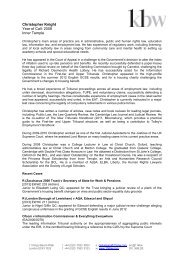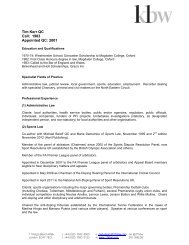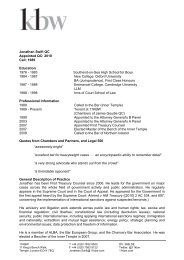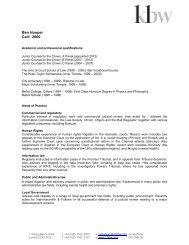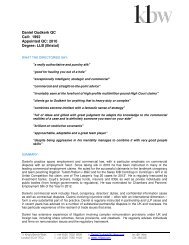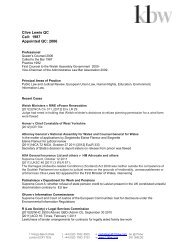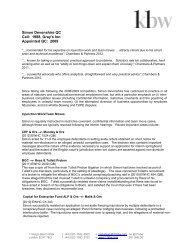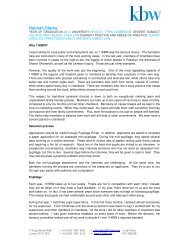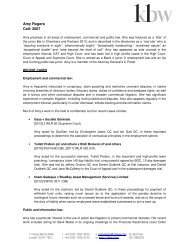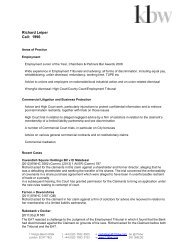THE PUBLIC SECTOR EQUALITY DUTY Joanne Clement - 11kbw
THE PUBLIC SECTOR EQUALITY DUTY Joanne Clement - 11kbw
THE PUBLIC SECTOR EQUALITY DUTY Joanne Clement - 11kbw
Create successful ePaper yourself
Turn your PDF publications into a flip-book with our unique Google optimized e-Paper software.
is nothing wrong in principle with such an approach and nothing inconsistent<br />
with the duties under the DDA 1995 or the EA 2010.<br />
32. No EIA had been conducted at the budget stage, but there was no statutory duty to<br />
carry out a formal EIA. The Court concluded that the Council had clearly had due<br />
regard to the needs of disabled people when setting the budget. The Council had<br />
recognized the need for an analysis of the impact, which it acknowledged would have<br />
be taken into account at a later date. It put in place a strategic response – i.e. a<br />
contingency fund and guarantees as to how an individual’s needs would still be met –<br />
and procedural and substantive protections for those affected. That amounted to<br />
consideration of the impact which was consistent with the need to have due regard<br />
and was a consideration of substance, not mere form: it involved a commitment, if<br />
necessary, of real money.<br />
33. Even if the claim had had merit, the Court would still have refused relief. If any relief<br />
were to be granted in respect of the Council’s budget calculation, as a matter of law,<br />
it must be quashed. This would invalidate the council tax which had been set, and<br />
would incur additional costs in the re-calculation and re-setting of the tax and reissuing<br />
tax demands. There was clear evidence that there was no realistic prospect<br />
that the Council would set a higher council tax, with the obvious implication that any<br />
relief which quashed the same would only have the effect of reducing the resources<br />
available. Ryder J concluded that invalidating the council tax for the year would be<br />
disproportionate, contrary to the public interest and would serve no intelligible<br />
purpose: see paragraph 85.<br />
E. Universal Services<br />
34. The next area to consider is how the courts have approached the PSED in relation to<br />
cuts or charges to services that are available to all. Challenges have typically alleged<br />
that the public authority has not exercised the PSED in substance and with rigour (the<br />
third Brown principle).<br />
35. In considering the impact of cuts or charges to such services, a public authority will<br />
need to consider:-<br />
(1) whether the proposal affects a particular protected group in a specific<br />
way over and above any impact on other groups in the community; and<br />
(2) whether the proposal has a disproportionate impact on a particular<br />
protected group, i.e. whether there is an obvious risk of indirect<br />
discrimination through “tainting by numbers”.<br />
<strong>Joanne</strong> <strong>Clement</strong>, 11KBW<br />
t. 020 7632 8500 e. <strong>Joanne</strong>.<strong>Clement</strong>@<strong>11kbw</strong>.com<br />
12



